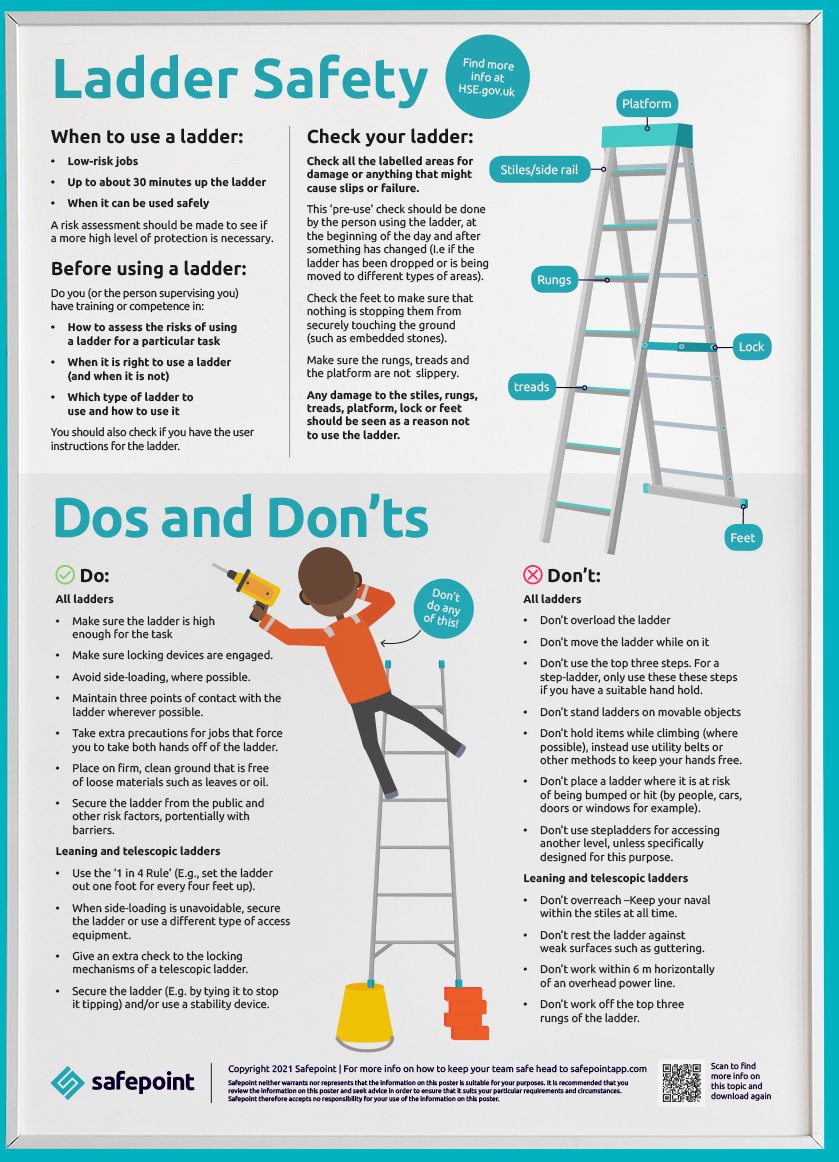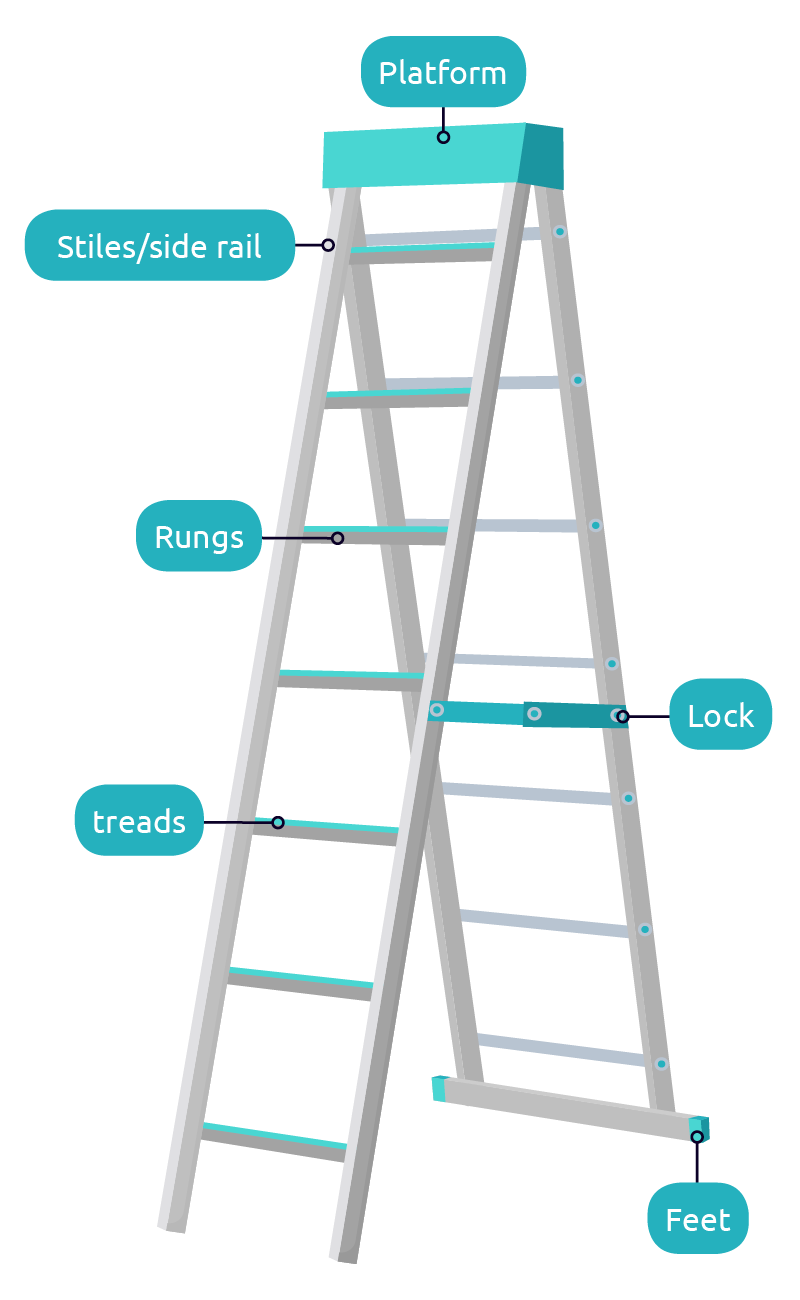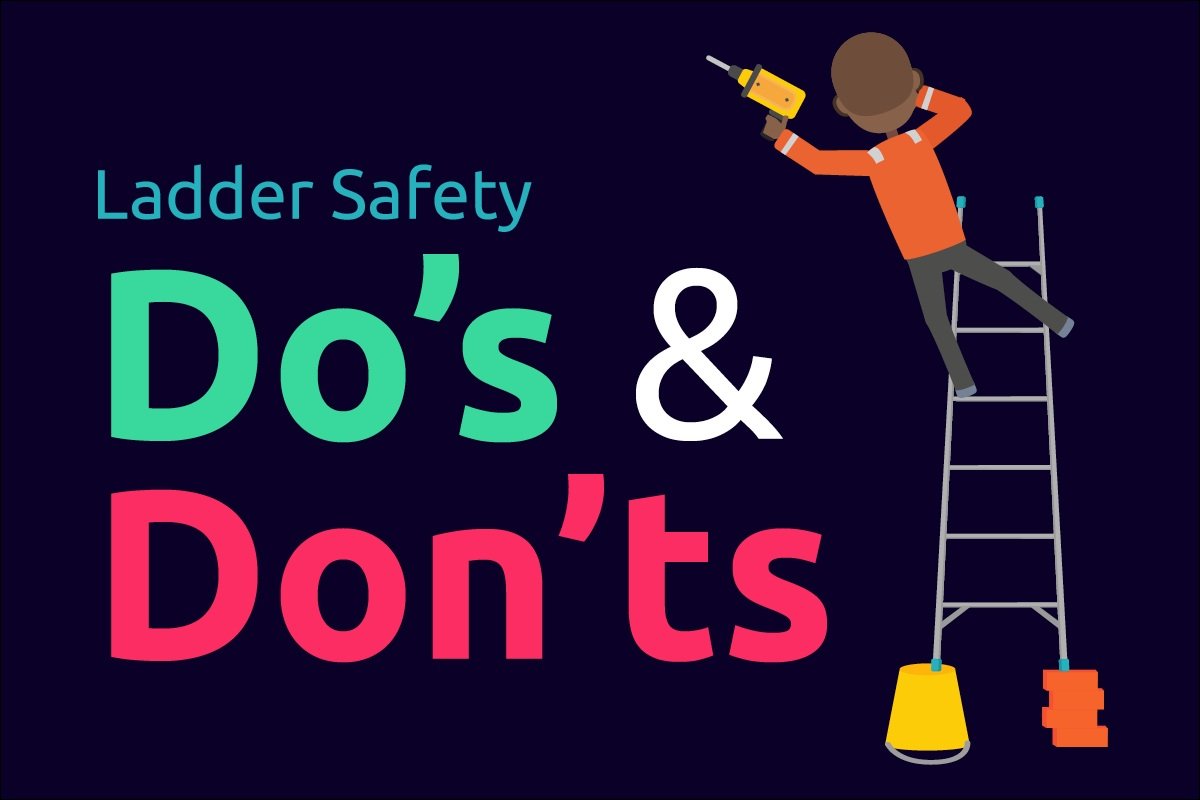Ladder Safety (Free Poster!)
An introduction to working safely on ladders and stepladders.
Health and safety law says ladders can be a sensible and practical option for low-risk, short-duration tasks, although they should not automatically be your first choice for working at height.
When to use a ladder
The Health and Safety Executive says that, before using a ladder, a risk assessment should be made to see if a more high level of protection is necessary.
This doesn’t mean you need to harness-up to change a lightbulb; rather you should make sensible decisions about the risks. Generally, ladders should only be used:
For low-risk jobs
For up to about 30 minutes up the ladder
When the ladder can be used safely (think about the environment it’s being used in)
Download your free Ladder Safety poster!
Before using a ladder
To work up a ladder, the worker should demonstrate competence “through a combination of training, practical and theoretical knowledge, and experience”.
If the worker is still being trained, they should be supervised by a competent person. The worker should be trained on:
How to assess the risks of using a ladder for a particular task
When it is right to use a ladder (and when it is not)
Which type of ladder to use and how to use it
You should also check if you have the user instructions for the ladder (these are often printed on the ladder).
How to check your ladder
The stiles (side rails) – check that they are not bent or damaged.
The feet – check to see if the feet are damaged, worn missing. Also check to make sure that nothing is stopping them from securely touching the ground (such as embedded stones). This is particularly important when moving from one area to another (such as outside to inside.
Rungs/steps – check to see if they are bent, worn, loose, slippery or missing.
Locking mechanisms – check whether the mechanisms work properly and whether the components or fixings bent, worn or damaged. Also check that the locking mechanism is fully engaged before use.
Stepladder platforms – check for damage or anything that might cause a slip.
This ‘pre-use’ check should be done by the person using the ladder, at the beginning of the day and after something has changed (I.e if the ladder has been dropped or is being moved to different types of areas).
Any damage to the stiles, rungs, treads, platform, lock or feet should be seen as a reason not to use the ladder.
Ladder safety do’s and don’ts
What to do when using a ladder
All ladders
Make sure the ladder is high enough for the task.
Make sure locking devices are engaged.
Avoid side-loading, where possible.
Maintain three points of contact with the ladder wherever possible.
Take extra precautions for jobs that force you to take both hands off of the ladder.
Place on firm, clean ground that is free of loose materials such as leaves or oil.
Secure the ladder from the public and other risk factors, potentially with barriers.
Leaning and telescopic ladders
Use the ‘1 in 4 Rule’ (E.g., set the ladder out one foot for every four feet up).
When side-loading is unavoidable, secure the ladder or use a different type of access equipment.
Give an extra check to the locking mechanisms of a telescopic ladder.
Secure the ladder (E.g. by tying it to stop it tipping) and/or use a stability device.
What not to do when using a ladder
All ladders
Don’t overload the ladder.
Don’t move the ladder while on it.
Don’t use the top three steps. For a step-ladder, only use these these steps if you have a suitable hand hold.
Don’t stand ladders on movable objects.
Don’t hold items while climbing (where possible), instead use utility belts or other methods to keep your hands free.
Don’t place a ladder where it is at risk of being bumped or hit (by people, cars, doors or windows for example).
Don’t use stepladders for accessing another level, unless specifically designed for this purpose.
Leaning and telescopic ladders
Don’t overreach –Keep your naval within the stiles at all time.
Don’t rest the ladder against weak surfaces such as guttering.
Don’t work within 6 m horizontally of an overhead power line.
Don’t work from the top three rungs of the ladder.
Download your free Ladder Safety poster!





